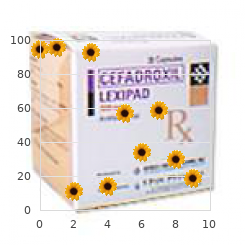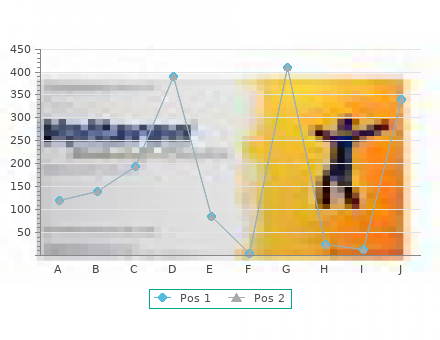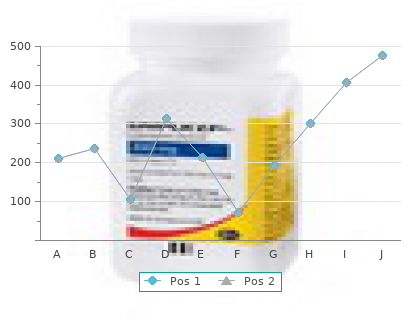

I. Harek. Texas Southern University.
Complete each activity and review your answers to evaluate your understanding of the chapter cheap caverta 50 mg line impotence signs. Learning Activity 6-1 Identifying Digestive Structures Label the illustration on page 109 using the terms listed below cheap caverta 50 mg overnight delivery erectile dysfunction even with cialis. Enhance your study and reinforcement of word elements with the power of DavisPlus. We recommend you complete the flash-card activity before completing Activity 6–3 below. Learning Activities 135 Learning Activity 6-3 Building Medical Words Use esophag/o (esophagus) to build words that mean: 1. Complete the termi- nology and analysis sections for each activity to help you recognize and understand terms related to the digestive system. Use a medical dictionary such as Taber’s Cyclopedic Medical Dictionary, the appendices of this book, or other resources to define each term. Then review the pronunciations for each term and practice by reading the medical record aloud. Eventually, she was diag- nosed as having cholecystitis with cholelithiasis and underwent cholecystectomy. This pain followed a crescendo pattern and peaked several weeks ago, at a time when family stress was also at its climax. It does not cause any nausea or vomiting, does not trigger any urge to defecate, and is not alleviated by passage of flatus. While referring to Figure 6–3, describe the location of the gallbladder in relation to the liver. How does the patient’s most recent postoperative episode of discomfort (pain) differ from the initial pain she described? Use a medical dictionary such as Taber’s Cyclopedic Medical Dictionary, the appendices of this book, or other resources to define each term. Then review the pronunci- ations for each term and practice by reading the medical record aloud. She was given nasal oxygen at 3 liters per minute and monitored with a pulse oximeter throughout the procedure. Through a previously inserted intravenous line, the patient was sedated with a total of 50 mg of Demerol intravenously plus 4 mg of Midazolam intravenously throughout the procedure. The Fujinon computed tomography scan videoendoscope was then readily introduced and the following organs evaluated. A representative biopsy was obtained from the gastric antrum and submitted to the pathology laboratory. Operative Report: Esophagogastroduodenoscopy with Biopsy 145 The patient tolerated the procedure well. Were there any ulcerations or erosions found during the exploratory procedure that might account for the bleeding? Upper Respiratory Tract • Describe the functional relationship between the Lower Respiratory Tract respiratory system and other body systems. Respiration • Pronounce, spell, and build words related to the res- Connecting Body Systems–Respiratory System piratory system. Medical Word Elements • Describe pathological conditions, diagnostic and Pathology therapeutic procedures, and other terms related to Chronic Obstructive Pulmonary Disease Asthma the respiratory system. Chronic Bronchitis • Explain pharmacology related to the treatment of Emphysema respiratory disorders. Influenza • Demonstrate your knowledge of this chapter Pleural Effusions by completing the learning and medical record Tuberculosis activities.


J Am Acad Child Adolesc Psychiatry 1998 buy caverta 100mg lowest price erectile dysfunction treatment in allopathy, of post-traumatic stress disorder in children using cognitive 37:395-403 safe caverta 50mg erectile dysfunction emotional. Richardson T, Stallard P, Velleman S: Computerised cognitive behavioural the role of parental involvement. J Am Acad Child Adolesc Psychiatry therapy for the prevention and treatment of depression and anxiety in 1999, 38:1223-1229. Nauta M, Scholing A, Emmelkamp P, Minderaa R: Cognitive-behavioral delivered cognitive-behavioral therapy for youth with obsessive- therapy for children with anxiety disorders in a clinical setting: no compulsive disorder. Kendall P: Treating anxiety disorders in children: results of a Psychiatry 2003, 42:1270-1278. Kendall P, Flannery-Schroeder E, Panichelli-Mindel S, Southam-Gerow M, and adolescents with clinical anxiety disorders. J Am Acad Child Adolesc Henin A, Warman M: Therapy for youths with anxiety disorders: a Psychiatry 2006, 45:134-141. Geller D, Hoog S, Heiligenstein J, Ricardi R, Tamura R, Kluszynski S, cognitive behavioral therapy for child anxiety disorders. J Am Acad Child Jacobson J: Fluoxetine treatment for obsessive-compulsive disorder in Adolesc Psychiatry 2006, 45:314-321. Riddle M, Scahill L, King R, Hardin M, Anderson G, Ort S, Smith J, therapy and psychoeducation/relaxation training for child obsessive- Leckman J, Cohen D: Double-blind, crossover trial of fluoxetine and compulsive disorder. J Am Acad Child Adolesc Psychiatry 2011, placebo in children and adolescents with obsessive-compulsive 50:1149-1161. J Am Acad Child Adolesc adolescents with obsessive-compulsive disorder: a preliminary report. Levy K, Hunt C, Heriot S: Treating comorbid anxiety and aggression in adolescents with obsessive-compulsive disorder: a randomized, children. Barrett P, Duffy A, Dadds M, Rapee R: Cognitive-behavioral treatment of Reichler R, Katz R, Landau P: Clomipramine hydrochloride in childhood anxiety disorders in children: long-term (6-year) follow-up. Practice parameter on the use of psychotropic medication in children blind crossover comparison. Practice parameter for the assessment and treatment of children and Linnoila M: Clomipramine treatment of childhood obsessive-compulsive adolescents with obsessive-compulsive disorder. Birmaher B, Axelson D, Monk K, Kalas C, Clark D, Ehmann M, Bridge J, Hamilton J, Keable H, Kinlan J, Schoettle U, et al: Practice parameter for Heo J, Brent D: Fluoxetine for the treatment of childhood anxiety the assessment and treatment of children and adolescents with disorders. Bernstein G, Borchardt C, Perwien A, Crosby R, Kushner M, Thuras P, Last C: Anxiety Study Group. Wagner K, Berard R, Stein M, Wetherhold E, Carpenter D, Perera P, Gee M, school refusal. Compton S, Grant P, Chrisman A, Gammon P, Brown V, March J: Sertraline pharmacotherapeutic agents for anxiety disorders in children and in children and adolescents with social anxiety disorder: an open trial. Coskun M, Zoroglu S: Efficacy and safety of fluoxetine in preschool the treatment of children with generalized anxiety disorder. A of children and adolescents with posttraumatic stress disorder: a review of epidemiological studies across the adult life span. Biederman J: Clonazepam in the treatment of prepubertal children with service utilization. Psychiatr Serv 2012, alprazolam in children and adolescents with overanxious and avoidant 63:66-72. Mehta K, Simonsick E, Penninx B, Schulz R, Rubin S, Satterfield S, Yaffe K: a glutamate antagonist, in children with treatment-resistant obsessive- Prevalence and correlates of anxiety symptoms in well-functioning compulsive disorder.


Reconciliation of medications is vital generic caverta 50mg line erectile dysfunction drugs medications, especially at the time of transfer to another health care setting effective caverta 100 mg erectile dysfunction and causes, including transfer to and from home and community. Order communication is ripe for more research and development, especially in two-way communication to improve and speed up “perfection” of orders and prescriptions. Frequency of medication management phases studies plus reconciliation and education Phase Frequency Prescribing 263 Order communication 26 Dispensing 17 Administering 39 Monitoring 77 Education 3 Reconciliation/Other 6 Research methods. This same pattern of disparity for the number of studies in the medication management phases exists for the distribution of study methods. Future research using methods appropriate for these complex interventions are needed. We also identified other issues in study methods including inappropriate analyses, labeling of methods, and adjusting data sets in some of the observational studies. Some studies addressing feature preferences tested for 40 or more associations without adjustment. The authors of sections of this report also have commented on incorrect choice of statistical analysis techniques in some studies that could have led to positive findings that are not justified. Studies that include nonphysician clinicians are not focused on the unique needs of the participants. The important issue of nursing workarounds that have developed to deal with systems that match physician but not nursing needs is also inadequately studied. However, the special needs of medication management for children such as age- and weight-based dosing were not adequately pursued. However the needs of the patients and their families to manage medications outside of hospitals and clinics were not studied. Qualitative studies that address pharmacists as well as patient needs and opportunities and important outcomes were also lacking. Hospitals and ambulatory care, but not necessarily specialty clinics, are also well- represented in the studies of this report (Table 22). From the descriptions in the articles we felt that descriptions of the system, including components and implementation issues such as training could have been added but they were not. Health information exchange is defined as the movement of health information across organizations using nationally accepted standards was not studied in any of the documents retrieved. We feel that authors should be encouraged to strive for publication in the peer-reviewed literature rather than trade publications and news magazines. Appendices Another of the challenges in this report to do with retrieval of studies from the bibliographic databases and also for abstraction and combining data, were inconsistencies in the use of terminology. In the pharmaceutical world benefit can be thought of as being “can it work” often under ideal situations (i. Impact, or pragmatic studies, refer to measuring the effect of an intervention in the real world. Trials of this nature are complex, long- term, have large numbers of people/situations being studied, and are done on mature and well- functioning systems. Their location is likely best at those centers in the United States that have established and mature health care systems that have solid support for technology, strong research teams, experience with qualitative and quantitative methods and expertise in collaborative projects that include clinicians, experienced informaticians, and patients and their families. Cost and economics are complex issues and important to many people, groups, organizations, and governments. Well- designed studies with an economic evaluation component included, is the best way to move forward in this area. Many studies have provided cost data, but useful economic data involves far more input. An 446 example of a cost study with data that is limited in its use is by Chisolm and colleagues, who did a before-after study of children with asthma in a children’s hospital.
At the desmosome discount caverta 100 mg with mastercard impotence tcm, the opposing plasma membranes are separated by a gap in which many fine cheap caverta 50mg without prescription erectile dysfunction pills comparison, transverse filaments are present. Desmosomes provide strong points of cohesion between cells and act as anchorage points for the cytoskeleton of each cell. Gap junctions (nexus) are broad areas of closely opposed plasma membranes, but there is no fusion of the plasma membranes and a narrow gap, of about 2 to 3 nm wide, remains. The “gap” is crossed by cytoplasmic filaments, which allow intracellular cytoplasm to transfer between cells. This type of cell junction not only functions as an adherent zone, but also permits the passage of ions and other small molecules (sugars, amino acids, nucleotides and vitamins). Junctional complexes comprise intercellular membrane specializations which encircle the cells, preventing access of luminal contents to the intercellular spaces. They are found between the cells of simple cuboidal (for example in the lungs) and simple columnar (for example in the gastrointestinal tract) epithelia, and lie immediately below the luminal surface. They are made up of three components: (i) tight junctions (zonula occludentes), which consist of small areas where the outer lamina of opposing plasma membranes are fused with one another, via specific proteins which make direct contact across the intercellular space. A fine mat of filamentous material is present on the cytoplasmic aspect of these junctions. Biochemical barriers 9 In addition to a physical barrier, the epithelia also present a biochemical barrier to drug absorption, in the form of degradative enzymes. For example, the gastrointestinal tract contains a wide array of enzymes, which are present in a variety of locations: • the lumen; • adsorbed to the mucus layer; • the brush-border (microvilli) of the enterocytes; • intra-cellular (free within the cell cytoplasm and within cellular lysosomes); • the colon (colonic microflora). Enzymes in the gut lumen include proteases, glycosidases and lipases, which are highly efficient at breaking down proteins, carbohydrates and fats from foodstuffs, so that they can be absorbed to make energy available to the body. However, these enzymes (and the enzymes present in the other locations in the gastrointestinal tract) can also degrade drug molecules, deactivating them prior to absorption. For example, the metabolizing enzyme cytochrome P450 on the microvillus tip is associated with a significant loss of drugs. Drugs that are orally absorbed must also first pass through the liver, via the portal circulation, prior to reaching the systemic circulation. The loss of drug activity due to metabolism in the gut wall and liver prior to reaching systemic circulation is termed the “first-pass” effect. In some cases this pre-systemic metabolism accounts for a significant, or even total, loss of drug activity. Thus the gastrointestinal tract poses a formidable challenge to the delivery of enzymatically labile drugs, such as therapeutic peptides and proteins. The extremely high metabolic activity of the gastrointestinal tract has been a major impetus in the exploration of alternative routes for systemic drug delivery. In comparison to the oral route, much less is known about the nature of the enzymatic barrier presented by the buccal, nasal, pulmonary, dermal and vaginal routes. However, it is generally accepted that such routes have a lower enzymatic activity, particularly towards drugs such as peptides and proteins. Furthermore, such routes also offer the advantage of avoiding first-pass metabolism by the liver. Efflux systems In recent years, it has been found that the barrier function of the intestinal epithelium cannot be adequately described by a combination of metabolic and physical barriers alone.
SHARE THE DANA LANDSCAPING PAGE